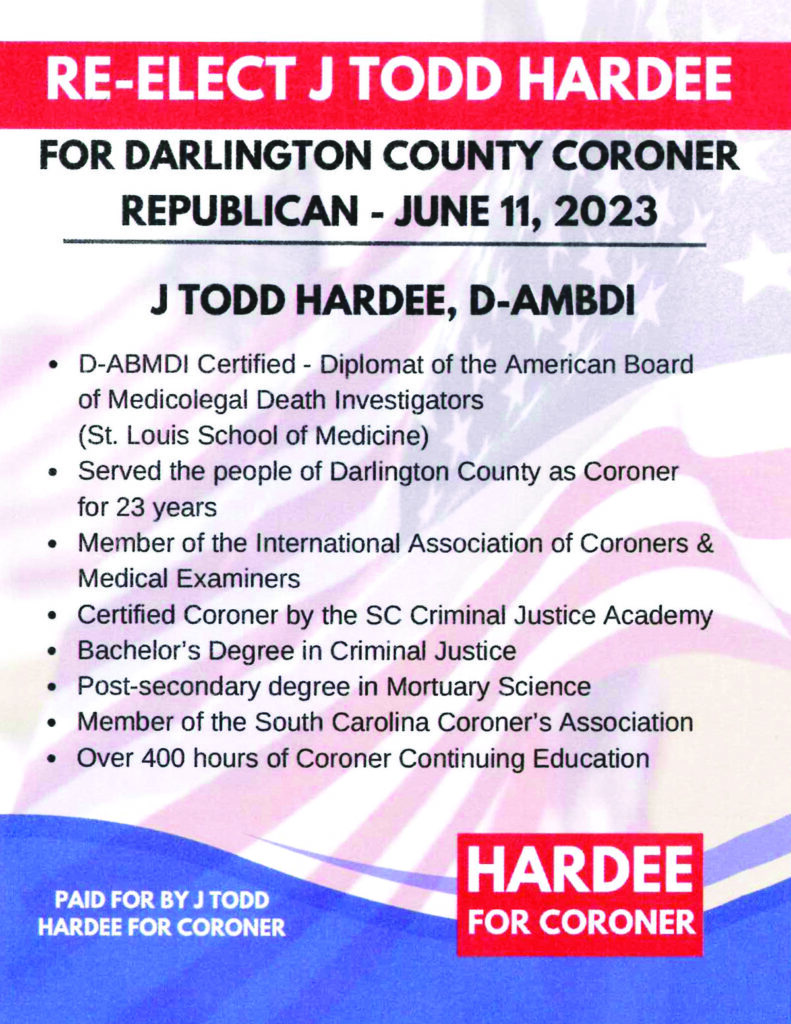Hartsville 2030 planning for city’s future

By Samantha Lyles, Staff Writer, slyles@newsandpress.net
The City of Hartsville is planning for future growth, and – with recent input from the public – their roadmap for the next twelve years is taking shape.
Since the city’s comprehensive plan hadn’t been updated since 2008, this new set of goals and guideposts – entitled “Vision 2030” – had to incorporate a number of recent advances and changes.
These include laying foundations to encourage entrepreneurship through more projects like Startsville (which provides support and workspace to local startup businesses) and the Coker College Enactus program, exploiting the unique educational advantages offered by Coker and the Governor’s School for Science and Mathematics, and bucking the trend of flat population growth by making the city hospitable for commercial and industrial businesses.
“Population growth is really where economic development becomes key. To buck that trend, people have to have a reason to move to Hartsville. Typically, people don’t move unless they have employment,” says Curtis Lee, chairman of the Hartsville Planning Commission.
Though the city continues to work toward establishing and certifying industrial parks for large clients, Lee says Hartsville’s plan can’t rely on recruiting the next Sonoco.
“The best thing for us to do, and the easiest thing for us to do, is to grow our existing companies,” says Lee. “We also want to provide entrepreneurs ways to get the education, support, and training that they need. With Coker and GSSM, we are kind of blessed that we have the ability to build that pipeline.”
Lee says that Hartsville’s heavy investment in building up its downtown could also help encourage visitors to consider sticking around for good.
“On the retail and commercial side, we have seen some success at making ourselves a regional destination for dining and shopping. A really good test for that will be the waterpark (Neptune Island). Will the people who visit the park come downtown? Will some of them over time see that the quality of life in Hartsville is really good and they would like to stay?” says Lee.
To that end, Vision 2030 posits the idea of Hartsville becoming a bedroom community for people working in Florence or Camden, and envisions the need for various housing options ranging from apartment complexes to tiny home communities.
The plan also calls for more recreational activities utilizing natural attractions like Kalmia Gardens and Black Creek, and looks to make the city more walkable and bikeable for residents. Sustainability also plays a role, and Lee says that beyond the concept of green energy, Hartsville aims to become a more “resilient” community.
“Resiliency is the ability to handle all the shocks, the unforeseen events. Particularly for small cities and towns, if a large employer leaves or you have a severe weather event or some other unpredictable shift happens, it can have a huge impact,” says Lee. “And the first step toward becoming resilient is to have a connected community that works together and can put aside differences for the better or the good.”
Though Vision 2030 planning officially kicked off last year, and continues with regular monthly meetings, the city planning commission held a public input meeting on June 25, and discussed even more ways to help Hartsville capitalize on key trends and ride out oncoming challenges.
The presentation from this public meeting is available online for those who were unable to attend or would like to review it in detail. To see the comprehensive plan, visit www.hartsvillesc.gov and enter “Hartsville 2030” in the search bar.


